Intel Core i7-10700 vs Core i7-10700K Review: Is 65W Comet Lake an Option?
by Dr. Ian Cutress on January 21, 2021 10:30 AM EST- Posted in
- CPUs
- Intel
- Core i7
- Z490
- 10th Gen Core
- Comet Lake
- i7-10700K
- i7-10700
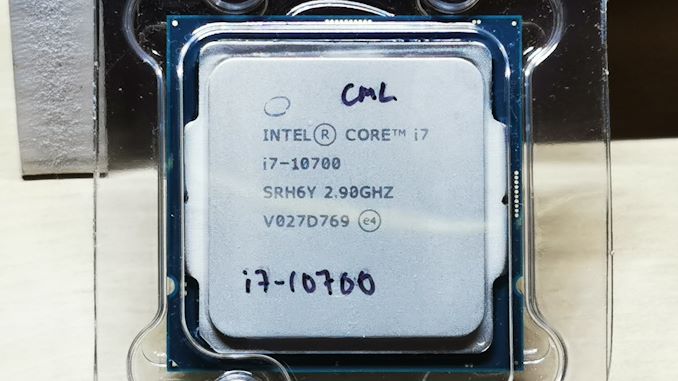
Over the years, Intel’s consumer processor lineup has featured its usual array of overclocking ‘K’ models, and more recently the ‘F’ series that come without integrated graphics. The bulk of the lineup however are still the versions without a suffix, the ‘nones’, like the Core i7-10700 in this review. These processors sit in the middle of the road, almost always having a 65 W TDP compared to the 91-125 W overclockable models, but also having integrated graphics, unlike the F family. What makes it interesting is when we pair one of these 65 W parts against its 125 W overclocking counterpart, and if the extra base and turbo frequency boost is actually worth the money in an era where motherboards don't seem to care about power?
Intel’s Core i7-10700 at 65 W: Is It Really 65 W?
The understanding of the way that Intel references its TDP (thermal design point) values has gone through a mini-revolution in the last few years. We have had an almost-decade of quad-core processors at around 90 W and 65 W, and most of them would never reached these numbers even under turbo modes - for example, the Core i5-6600K was rated at 91 W, but peak power draw was only 83 W. This has been the norm for a while, until recently when Intel had to start boosting the core count. As we have slowly gone up in core count, from 4 to 6 to 8 and now 10, these numbers have seemed almost arbitrary for a while.
The reason comes down to what TDP really is. In the past, we used to assume that it was the peak power consumption of the processor was its TDP rating – after all, a ‘thermal design point’ of a processor was almost worthless if you didn’t account for the peak power dissipation. What makes Intel’s situation different (or confusing, depending on how you want to call it) is that the company defines its TDP in the context of a 'base' frequency. The TDP will be the maximum power under a sustained workload for which the base frequency is the minimum frequency guarantee. Intel defines a sustained workload one in which the 'turbo budget' has expired, and the processor will achieve its best frequency above base frequency (but not turbo modes) .
The point about ‘not turbo’ is the key element here. Intel’s TDP ratings are only in effect for the base frequency, not the turbo frequency. If a PC is built with a maximum power dissipation in mind, allowing a processor to turbo above that power might have catastrophic consequences for the thermal performance of that system. The other angle is that Intel never quotes the turbo power levels (also known as Power Level 2, or PL2) alongside the other specifications, although they are technically in the specification documents when they get released.
On top of all this, motherboard manufacturers also get a say in how a processor performs. Because turbo power is only an optional suggestion from Intel, technically Intel will accept any value for the ceiling of the turbo power, and accept turbo under any circumstances if the motherboard manufacturer wants it. Motherboard manufacturers overengineer their motherboards to support longer turbo times (or overclocking), and so they will often ignore these Intel recommended values for PL2, allowing the processor to turbo harder for longer, and in a lot of cases of premium motherboards, indefinitely.
So why does all this matter with respect for this review? Well my key comparison in this review is our new processor, the Core i7-10700, up against its overclocking counterpart, the Core i7-10700K. Aside from the suffix difference, the K variant has a TDP almost twice as high, and this manifests almost entirely in the base frequency difference.
| Intel SKU vs SKU (an homage to Spy vs Spy) |
||
| Intel Core i7-10700K |
AnandTech | Intel Core i7-10700 |
| 8 C / 16 T | Cores / Threads | 8 C / 16 T |
| 3.8 GHz | Base Frequency | 2.9 GHz |
| 5.1 GHz | Peak Turbo (1-2C) | 4.8 GHz |
| 4.7 GHz | All-Core Turbo | 4.6 GHz |
| 2 x DDR4-2933 Up to 128 GB |
DRAM Support | 2 x DDR4-2933 Up to 128 GB |
| 125 W | TDP / PL1 | 65 W |
| Intel UHD 630 | Integrated Graphics | Intel UHD 630 |
| $374 | Price (1ku) | $323 |
Even though the TDP is 125 W vs 65 W, the peak turbo frequency difference is only +300 MHz, and the all-core turbo difference is only +100 MHz. In contrast, the base frequency difference is +900 MHz, and that is ultimately what the user is paying for. But this base frequency only matters if the motherboard bothers to put a cap on turbo budgets.
The base frequency is more of a minimum guaranteed frequency, than an absolute 'this is what you will get' value under a sustained workload. Intel likes to state that the base frequency is the guarantee, however if a processor can achieve a higher frequency while power limited, it will - if it can achieve that power value with 200 MHz above base frequency, it will run at the higher frequency. If this sounds familiar, this is how all AMD Ryzen processors work, however Intel only implements it when turbo is no longer available. This ends up being very processor dependent.
For the turbo, as mentioned, Intel has recommendations for power levels and turbo time in its documentation, however OEMs and motherboard manufacturers are free to routinely ignore it. This is no more obvious than when comparing these two processors. What does this mean for end-users? Well, graphs like this.

First time I saw these numbers, it shocked me. Why is this cheaper, and supposedly less powerful version of this silicon running at a higher turbo power in a standard off-the-shelf Intel Z490 motherboard?
Welcome to our review. There’s going to be a lot of discussion on the page where we talk about power, frequency, and the quality of the silicon. Also when it comes to benchmarking, because if we were to take an extreme view of everything, then benchmarking is pointless and I'm out of a job.
The Market
The Core i7-10700 and Core i7-10700K are both members of Intel’s 10th Generation ‘Comet Lake’ Core i7 family. This means they are based on Intel’s latest 14nm process variant (14+++, we think, Intel stopped telling us outright), but are essentially power and frequency optimized versions of Intel’s 6th Generation Skylake Core, except we get eight cores rather than four.
| Intel 10th Gen Comet Lake Core i9 and Core i7 |
||||||||||
| AnandTech | Cores | Base Freq |
TB2 2C |
TB2 nT |
TB3 2C |
TVB 2C |
TVB nT |
TDP (W) |
IGP | MSRP 1ku |
| Core i9 | ||||||||||
| i9-10900K | 10C/20T | 3.7 | 5.1 | 4.8 | 5.2 | 5.3 | 4.9 | 125 | 630 | $488 |
| i9-10900KF | 10C/20T | 3.7 | 5.1 | 4.8 | 5.2 | 5.3 | 4.9 | 125 | - | $472 |
| i9-10900 | 10C/20T | 2.8 | 5.0 | 4.5 | 5.1 | 5.2 | 4.6 | 65 | 630 | $439 |
| i9-10900F | 10C/20T | 2.8 | 5.0 | 4.5 | 5.1 | 5.2 | 4.6 | 65 | - | $422 |
| i9-10900T | 10C/20T | 1.9 | 4.5 | 3.7 | 4.6 | - | - | 35 | 630 | $439 |
| i9-10850K | 10C/20T | 3.6 | 5.0 | 4.7 | 5.1 | 5.2 | 4.8 | 125 | 630 | $453 |
| Core i7 | ||||||||||
| i7-10700K | 8C/16T | 3.8 | 5.0 | 4.7 | 5.1 | - | - | 125 | 630 | $374 |
| i7-10700KF | 8C/16T | 3.8 | 5.0 | 4.7 | 5.1 | - | - | 125 | - | $349 |
| i7-10700 | 8C/16T | 2.9 | 4.7 | 4.6 | 4.8 | - | - | 65 | 630 | $323 |
| i7-10700F | 8C/16T | 2.9 | 4.7 | 4.6 | 4.8 | - | - | 65 | - | $298 |
| i7-10700T | 8C/16T | 2.0 | 4.4 | 3.7 | 4.5 | - | - | 35 | 630 | $325 |
| T = Low Power F = No Integrated Graphics K = Overclockable TB2/TB3 = Intel Turbo Boost 2 (any core in CPU), TB3 (specific core in CPU) TVB = Thermal Velocity Boost (Spec = 70ºC); routinely ignored by motherboard vendors |
||||||||||
Both CPUs are rated to run dual channel memory at DDR4-2933 speeds, and have 16 PCIe 3.0 lanes with support for Intel 400-series chipsets. These are socket LGA1200 processors, and are incompatible with other LGA115x motherboards.
Aside from the power and frequency differences, the other one is the price: $335 MSRP for the Core i7-10700, and $387 MSRP for the Core i7-10700K. This is a +$52 difference, which is designed to enable better frequencies and overclocking on the K processor. The non-K processor may be shipped with Intel’s 65 W PCG-2015C thermal solution, depending on location, although the first thing you would want to do is to buy something/anything else to cool the processor with given that it'll peak at 215W in enthusiast systems.
On the competing side from AMD, the nearest solution is the Ryzen 5 5600X, a 65W version of Zen 3 with two fewer cores but higher IPC, with an MSRP of $300. This does come with a reasonably good default cooler. Our full review of the Ryzen 5 5600X can be found here.
This Review
The goal of this review was initially just to benchmark the Core i7-10700 and see where it fits into the market. As our testing results came into focus, it was clear that we had an interesting comparison on our hands against the Core i7-10700K, which we have also tested. In this review the focus will be on the difference between the two, focusing primarily on where the i7-10700 lands compared to the competition, and perhaps some of the complexities involved.
Test Setup
As per our processor testing policy, we take a premium category motherboard suitable for the socket, and equip the system with a suitable amount of memory running at the manufacturer's maximum supported frequency. This is also typically run at JEDEC subtimings where possible. It is noted that some users are not keen on this policy, stating that sometimes the maximum supported frequency is quite low, or faster memory is available at a similar price, or that the JEDEC speeds can be prohibitive for performance. While these comments make sense, ultimately very few users apply memory profiles (either XMP or other) as they require interaction with the BIOS, and most users will fall back on JEDEC supported speeds - this includes home users as well as industry who might want to shave off a cent or two from the cost or stay within the margins set by the manufacturer.
| Test Setup | |||||
| Intel LGA1200 | Core i9-10900K Core i9-10850K Core i7-10700K Core i7-10700 |
ASRock Z490 PG Velocita |
BIOS P1.50 |
TRUE Copper + SST* |
Corsair DomRGB 4x8 GB DDR4-2933 |
| AMD AM4 | Ryzen 9 5900X Ryzen 7 5800X Ryzen 5 5600X |
MSI MEG X570 Godlike |
1.B3 T13 |
Noctua NHU-12S SE-AM4 |
ADATA 2x32 GB DDR4-3200 |
| GPU | Sapphire RX 460 2GB (CPU Tests) NVIDIA RTX 2080 Ti FE (Gaming Tests) |
||||
| PSU | Corsair AX860i Corsair AX1200i Silverstone SST-ST1000-P |
||||
| SSD | Crucial MX500 2TB | ||||
| *TRUE Copper used with Silverstone SST-FHP141-VF 173 CFM fans. Nice and loud. | |||||
Many thanks to...
We must thank the following companies for kindly providing hardware for our multiple test beds. Some of this hardware is not in this test bed specifically, but is used in other testing.
| Hardware Providers for CPU and Motherboard Reviews | |||
| Sapphire RX 460 Nitro |
NVIDIA RTX 2080 Ti |
Crucial SSDs | Corsair PSUs |
 |
 |
 |
|
| G.Skill DDR4 | ADATA DDR4 | Silverstone Coolers |
Noctua Coolers |
 |
 |
 |
|
A big thanks to ADATA for the AD4U3200716G22-SGN modules for this review. They're currently the backbone of our AMD testing.
Users interested in the details of our current CPU benchmark suite can refer to our #CPUOverload article which covers the topics of benchmark automation as well as what our suite runs and why. We also benchmark much more data than is shown in a typical review, all of which you can see in our benchmark database. We call it ‘Bench’, and there’s also a link on the top of the website in case you need it for processor comparison in the future.
If anyone is wondering why I've written the SKU of the processor on it with a sharpie, as per our lead image, it's because when you're shuffling through a box of them in low light, what is printed on the headspreader can be difficult to read if the light isn't right. With a perminent marker, it makes it much easier to read at-a-glance.
Read on for our full review.


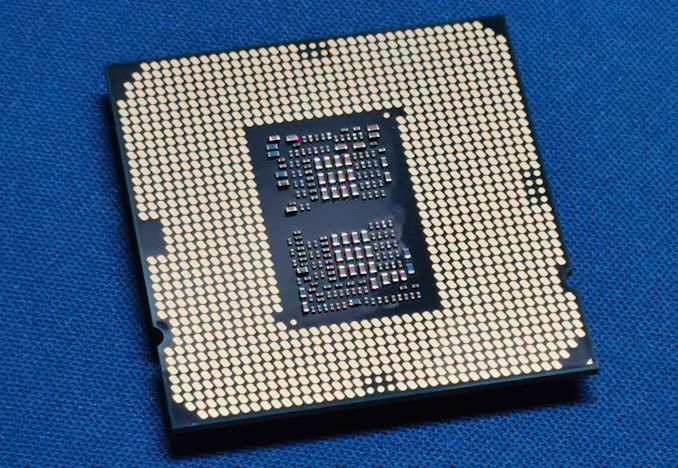
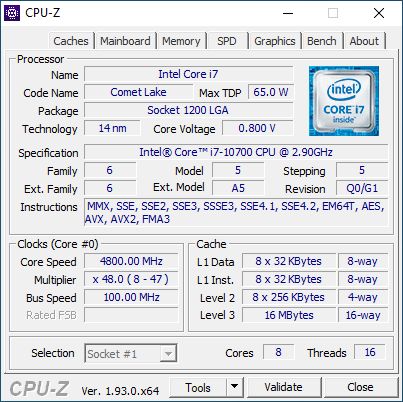
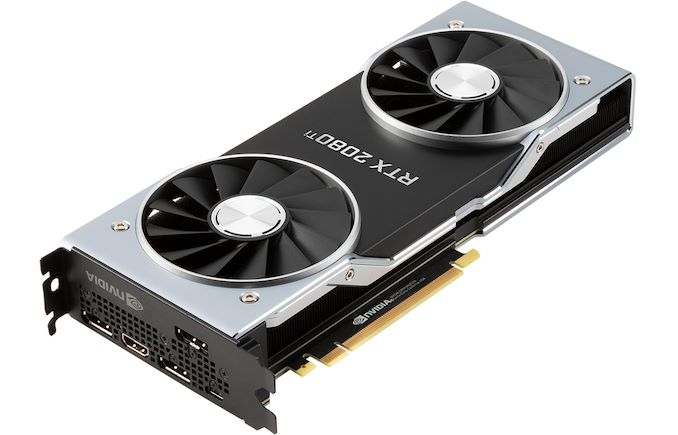
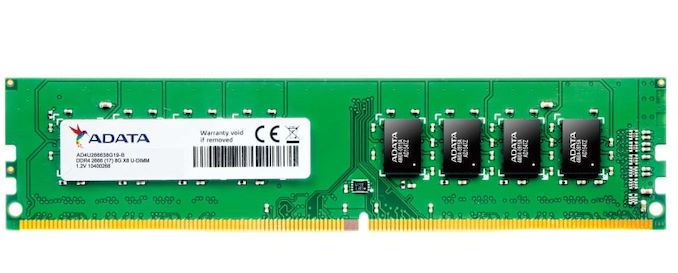








210 Comments
View All Comments
Spunjji - Friday, January 22, 2021 - link
You can infer temperature from wattage more accurately than via a temperature measurement, because that measurement depends on the configuration of the test system (cooler type, fan speeds, case airflow).Hxx - Friday, January 22, 2021 - link
thats not true because its not proportional with power draw. A 10700k uses 200+W and runs at around 70C while a 5600x uses much less power running at around the same temps. Power draw is not a good indicator and yes it comes down to your setup. Intel is just not as efficient but doesnt make it a hot chip.Oxford Guy - Sunday, January 24, 2021 - link
Yes, it does. That heat doesn't vanish into thin air. It exists.Spunjji - Monday, January 25, 2021 - link
"A 10700k uses 200+W and runs at around 70C"Again, with what cooler and fan speeds? Even accounting for the different die sizes, the only way this comparison can really be true is if there isn't an equal amount of cooling between the two processors. As OxfordGuy said, that heat has to go *somewhere*; for the temperatures to be the same between different heat loads *something* must be causing more heat to be dissipated.
vegemeister - Sunday, January 24, 2021 - link
No. IIRC all of the K variants have soldered IHS and shaved down dies. Not all of the non-K products do.Spunjji - Monday, January 25, 2021 - link
That's a point I had forgotten, and a fair one - but temps in a review still won't tell an end-user much about the temps they'll get, especially as variability can be quite high depending on the voltage an individual CPU requires to operate at its various speeds.dsplover - Friday, January 22, 2021 - link
Nobody wants Intel until they ditch 14nm. I love Intel, but I’m getting their next CPU, as well as a desktop AMD 5000 w/APU.Seems they survived their diversity exercises and are back in the game, but not until 2022.
Until then a few 4790k’s are still paying me.
Spunjji - Monday, January 25, 2021 - link
"Seems they survived their diversity exercises"Intel are doing badly, it MUST be because they stopped almost exclusively hiring white men! /s
Motivated reasoning is a disease.
Hixbot - Saturday, February 13, 2021 - link
Wow, you're really pinning Intel's faults on diversity? Meanwhile you are ignoring AMDs success is lead by an Asian American woman? You really need to check your bigotry at the door.Oxford Guy - Friday, January 22, 2021 - link
‘Specifically on the sha256 tests, both AMD and Via pull out a lead due to a dedicated sha256 compute block in each core.’VIA, eh?